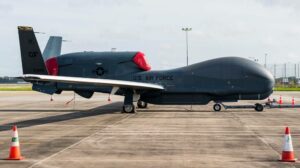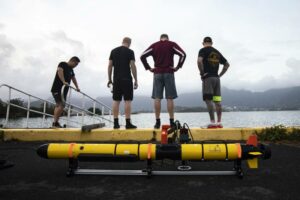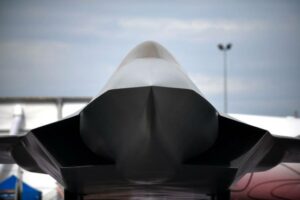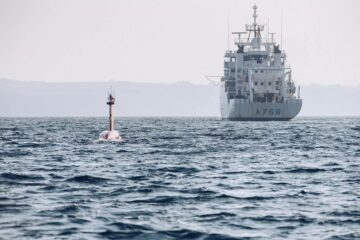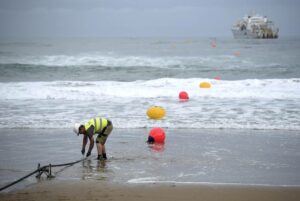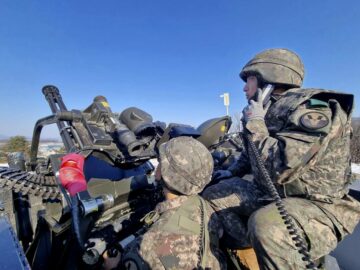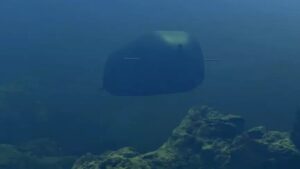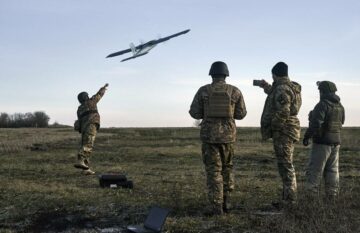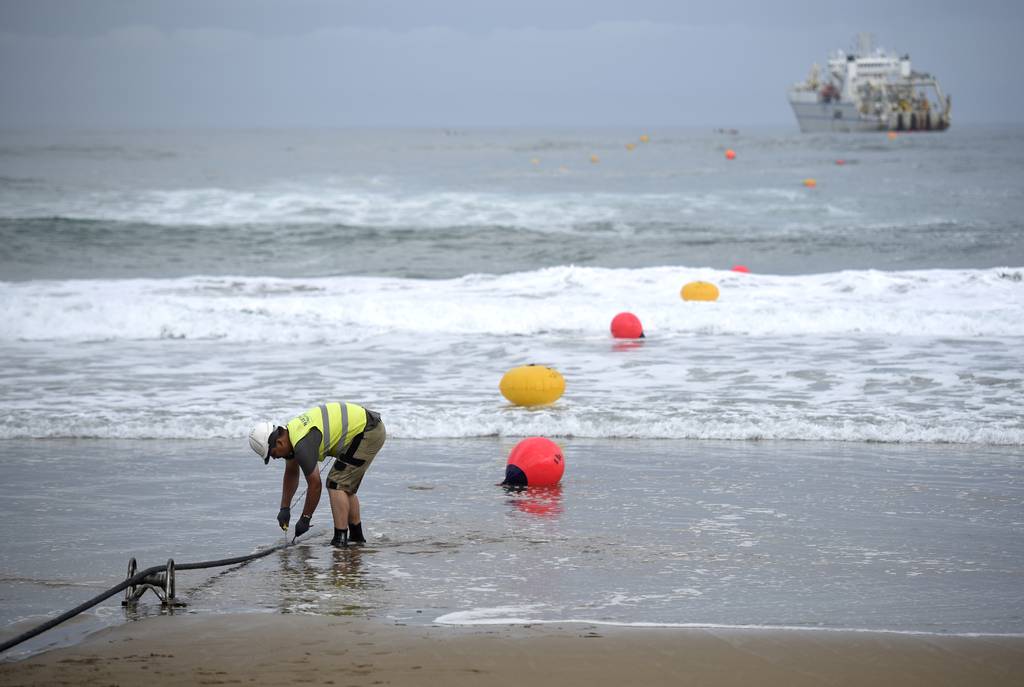
ROME — The balance between offense and defense in war swings back-and-forth, often depending on who has the best kit. But on the seabed’s battlefield, the aggressors are currently very much in charge.
In October, all it reportedly took was an anchor, dragged along the seabed for about 112 miles by a Chinese cargo ship in the Baltic Sea, to rip through an undersea gas pipeline and a telecoms cable linking Estonia and Finland.
Finnish politicians alleged sabotage, just as the severing of a cable off Norway in 2022 was linked to a Russian fishing trawler that had sailed back-and-forth above the cable 20 times.
Adding to the alarm over the rupturing of the Nord Stream pipeline in the Baltic Sea in 2022, the incidents raised fears for the world’s 750,000 miles of seabed internet cables that keep the planet online.
“Seabed warfare is a game where the aggressor currently has considerable advantages thanks to the sheer scale of infrastructure to protect, the fragility of pipelines and the various opportunities to attack in shallow water — with the Chinese cargo ship incident a possible example,” said Sidharth Kaushal, an expert in sea power and military science at the London-based Royal United Services Institute think tank.
The “game” is nothing new, dating back at least to the 1970s when U.S. Navy divers placed listening devices on undersea Soviet communications cables in the Pacific Ocean.
That was a tough lesson for Russia, which responded by investing in undersea espionage throughout the 1990s, even after the Cold War; the country now has an “in-built advantage” on the seabed, said H.I. Sutton, the author of the blog Covert Shores.
“Russia has the Belgorod submarine with seabed capability as well as two, stretched Delta-class submarines — all three are nuclear-powered and are host submarines, which can each carry two manned and one unmanned submarine,” he said.
Ready to be ferried by their hosts are at least four deep-diving submarines, 45-70 meters (148-230 feet) long, he added.
The subs are operated by Russia’s Main Directorate of Deep-Sea Research, which also has a vessel, the Yantar, with a reputation for hovering over internet cables, Sutton said.
“It can carry several robot subs and crewed subs which can descend to 6,000 meters. It is suspected that the ship’s primary function is mapping cables and preparing attacks on them,” he added.
In response, the U.S. has deployed two ships under its Cable Ship Security Program to monitor critical infrastructure. “Two ships are a good start, but just not enough,” said retired U.S. Navy Adm. James Foggo.
In the U.K., Adm. Ben Key, first sea lord of the Royal Navy, said in October that more than ships and subs, the West needs better legal backing before it can properly protect pipelines and cables that stretch across the seabed in international waters “owned by nobody.”
Indeed, Kaushal said, “the legal aspect of countering aggressors is crucial since there are limited options for prosecuting an attack which occurred in international waters.”
“It’s also politically risky if you react and get it wrong,” he added. “The alternative is go public about the attacker, but that risks revealing the source of the intelligence you used to discover the culprit.”
But as the number of undersea internet cables soar, the damage to global communications by an attack may be reduced, said Elio Calcagno, a research fellow at the IAI think tank in Rome.
“Redundancy may prove the best defense,” he said.
Defensive measures
Regardless, European nations are now accelerating their efforts to defend the seabed.
France was an early starter with a new seabed strategy, while the U.K. has launched Proteus, a 6,000-ton vessel designed for undersea surveillance that can also act as a mothership to Cetus, a planned 12-meter-long, uncrewed submarine that former British Defence Secretary Ben Wallace described as a response to “the growing threats to our underwater infrastructure.”
And in November, the U.K. announced it would contribute seven naval vessels and a Royal Air Force P-8 Poseidon maritime patrol aircraft to a task force patrolling seabed infrastructure; that group also involves several other northern European, Nordic and Baltic nations.
Meanwhile, Italy and Norway are tapping commercial companies for data to help protect cables.
“The commercial sector has more unmanned underwater vehicles than most navies and can also provide data from pressure sensors placed on pipelines that detect movement nearby,” Kaushal said.
As Italy took the lead in a new joint European Union seabed security program in 2023, Italian Navy officials heard from local energy firm Saipem about its work on undersea drones able to autonomously monitor pipelines and park in underwater bays connected to the surface. From those bays, the systems can recharge and upload data, allowing them to stay submerged for months.
“You are going to see this kind of persistence more and more in the military field,” Calcagno said.
But just as drones could help guard cables, they may also have the ability to position explosives or self-detonate.
Kaushal said the defense of cables and pipelines could profit from the improving performance of low-frequency, active sonar. “It gives wide-area surveillance but has been known to give false positive results. However, that may change as machine learning allows it to sift them out,” he said.
Another technology making strides is synthetic aperture sonar, which can guarantee resolution in the inches. Based on a principle similar to airborne synthetic aperture radar, this tech mimics a much larger antenna array by collating a series of signals received as the emitter moves through the water.
Researchers are also working on turning fiber-optic cables into giant sensors able to spot incoming saboteurs. Since pressure and vibrations undersea change the way light travels through cables, those changes can be recorded, they believe.
But Sutton said getting tipped off to an attack does not mean you can stop it.
“Even if you are warned, can you get there in time? Everything happens in slow motion under the sea,” he said.
This is just another example of how seabed aggressors remain in the driving seat, he explained; that is, until the next evolution of seabed warfare — the arming of undersea drones.
“The West has hang-ups about arming undersea drones, and it comes down to communications. You can put a human in the loop with an aerial drone, but underwater you do not have constant communication with the drone. You would have to leave decision-making to the drone,” he said.
“But China already likely has armed undersea drones, and experience in Ukraine may well change the West’s view,” he added, referring to Russia’s war against Ukraine.
Last year, the Ukrainian Navy damaged Russian ships using surface drones carrying explosives, and the service is already working on underwater versions.
“Are we going to see undersea drones armed with torpedoes fighting each other?” Sutton said. “It’s inevitable.”
Tom Kington is the Italy correspondent for Defense News.
- SEO Powered Content & PR Distribution. Get Amplified Today.
- PlatoData.Network Vertical Generative Ai. Empower Yourself. Access Here.
- PlatoAiStream. Web3 Intelligence. Knowledge Amplified. Access Here.
- PlatoESG. Carbon, CleanTech, Energy, Environment, Solar, Waste Management. Access Here.
- PlatoHealth. Biotech and Clinical Trials Intelligence. Access Here.
- Source: https://www.defensenews.com/global/europe/2024/01/04/european-navies-try-to-keep-up-in-cat-and-mouse-game-of-seabed-warfare/
- :has
- :is
- :not
- :where
- $UP
- 000
- 12
- 20
- 2022
- 2023
- 70
- 750
- 8
- a
- ability
- Able
- About
- above
- accelerating
- across
- Act
- active
- added
- advantages
- After
- against
- AIR
- Air Force
- aircraft
- alarm
- All
- alleged
- Allowing
- allows
- along
- already
- also
- alternative
- an
- Anchor
- and
- announced
- Another
- antenna
- ARE
- armed
- Array
- AS
- aspect
- At
- attack
- Attacks
- author
- autonomously
- back
- backing
- Balance
- based
- BE
- been
- before
- believe
- ben
- BEST
- Better
- between
- Blog
- British
- but
- by
- cable
- cables
- CAN
- capability
- Cargo
- carry
- carrying
- change
- Changes
- charge
- China
- chinese
- cold
- COM
- comes
- commercial
- Communication
- Communications
- Companies
- connected
- considerable
- constant
- contribute
- could
- countering
- country
- critical
- Critical Infrastructure
- crucial
- Currently
- damage
- data
- Dating
- dec
- Decision Making
- defence
- Defense
- Depending
- deployed
- descend
- described
- designed
- detect
- Devices
- discover
- do
- does
- down
- driving
- drone
- Drones
- each
- Early
- efforts
- energy
- enough
- espionage
- estimates
- estonia
- European
- european union
- Even
- everything
- evolution
- example
- experience
- expert
- explained
- false
- fears
- Feet
- fellow
- field
- fighting
- Finland
- Firm
- First
- Fishing
- For
- Force
- Former
- four
- fragility
- from
- function
- game
- GAS
- gas pipeline
- get
- getting
- giant
- Give
- gives
- Global
- Globally
- Go
- going
- good
- Group
- Growing
- guarantee
- Guard
- had
- happens
- Have
- he
- heard
- help
- host
- hosts
- How
- However
- HTTPS
- human
- human in the loop
- i
- if
- images
- improving
- in
- inches
- incident
- incidents
- Incoming
- inevitable
- Infrastructure
- Institute
- Intelligence
- International
- Internet
- into
- investing
- involves
- IT
- Italian
- Italy
- ITS
- james
- joint
- jpg
- just
- Keep
- Key
- Kind
- kit
- known
- larger
- Last
- launched
- lead
- learning
- least
- Leave
- Legal
- lesson
- light
- likely
- Limited
- linked
- linking
- Listening
- local
- Long
- machine
- machine learning
- Main
- Making
- map
- mapping
- Maritime
- May..
- mean
- Military
- Monitor
- months
- more
- most
- motion
- movement
- moves
- much
- Nations
- needs
- New
- news
- next
- Nord Stream
- Nord Stream pipeline
- Norway
- nothing
- November
- now
- number
- occurred
- ocean
- october
- of
- off
- officials
- often
- on
- ONE
- online
- operated
- opportunities
- Options
- or
- Other
- our
- out
- over
- Pacific
- Pacific Ocean
- Park
- performance
- persistence
- pipeline
- placed
- planet
- planned
- plato
- Plato Data Intelligence
- PlatoData
- politically
- Politicians
- poseidon
- position
- positive
- possible
- power
- preparing
- pressure
- primary
- principle
- Profit
- Program
- properly
- protect
- Prove
- provide
- public
- put
- radar
- raised
- React
- received
- Recharge
- recorded
- Reduced
- region
- remain
- reportedly
- reputation
- research
- Resolution
- response
- Results
- revealing
- risks
- Risky
- robot
- rome
- royal
- Russia
- russian
- s
- Said
- Scale
- Science
- SEA
- secretary
- sector
- security
- see
- sensors
- Series
- service
- Services
- seven
- several
- shallow
- ship
- ships
- Shows
- Sift
- signals
- similar
- since
- slow
- Source
- soviet
- Spot
- start
- stay
- Stop
- Strategy
- stream
- strides
- Surface
- surveillance
- suspected
- Swings
- synthetic
- Systems
- tank
- tapping
- Task
- task force
- tech
- Technology
- telecoms
- than
- thanks
- that
- The
- The Source
- The West
- their
- Them
- There.
- they
- think
- think tank
- this
- those
- threats
- three
- Through
- throughout
- time
- times
- to
- took
- tough
- travels
- try
- Turning
- two
- U.K.
- u.s.
- U.S. Navy
- Ukraine
- Ukrainian
- under
- underwater
- union
- United
- until
- updated
- used
- using
- various
- Vehicles
- very
- Vessel
- vessels
- via
- View
- war
- warned
- was
- Water
- Waters
- Way..
- we
- WELL
- were
- West
- when
- which
- while
- WHO
- with
- Work
- working
- world’s
- would
- Wrong
- year
- you
- zephyrnet

